#Giant pacific octopus
Explore tagged Tumblr posts
Text

The suckers of a giant Pacific octopus (Enteroctopus dofleini) in Alaska, USA
by Robin Gwen Agarwal
#giant pacific octopus#octopi#cephalopods#enteroctopus dofleini#enteroctopus#enteroctopodidae#octopoda#cephalopoda#mollusca#wildlife: alaska#wildlife: usa#wildlife: north america
265 notes
·
View notes
Text
what the octo doin
233 notes
·
View notes
Note
If you haven’t already can you do giant pacific octopus 🙏 they’re my favs ٩( ᐛ )و

Daily Cephalopod #197
#octopus#giant pacific octopus#daily cephalopod#squid mail くコ:彡#GOOBERS!!!#cephalopod#marine life#ocean creatures#ocean critters#marine biology
176 notes
·
View notes
Text
🐙Daily Cephalopod Fact:🐙
The Giant Pacific Octopus can be found from the intertidal zone down to 6,600 ft, and is best-adapted to colder, oxygen- and nutrient-rich waters. It is one of the largest octopus species on earth and can often be found in aquariums and research facilities in addition to the ocean. They play an important role in maintaining the health and biodiversity of deep sea ecosystems, cognitive research, and the fishing industry.
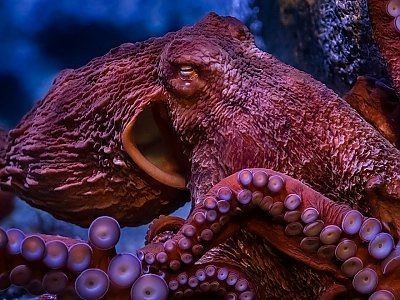
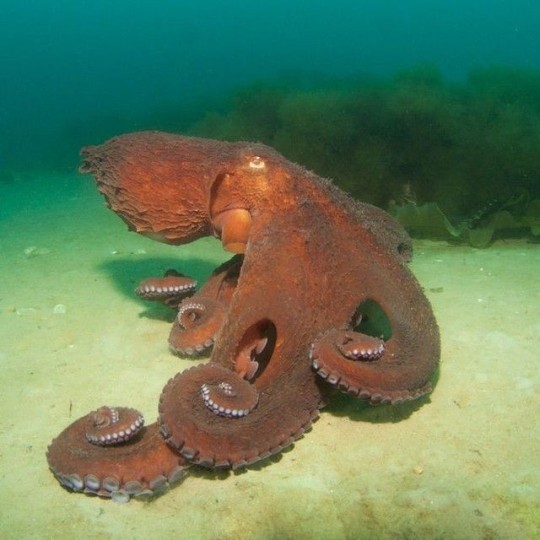
#giant pacific octopus#pacific octopus#giant octopus#giant cephalopod#cephalopod#facts about cephalopods#daily cephalopod fact#daily cephalopod#cephalopod facts#shark blog#respect the locals#marine animals#marine biology#marine life#marine#ocean life#ocean animal#ocean
170 notes
·
View notes
Text




Me and my dorm mates decided to decorate our living area with a whole bunch of fish, so here’s my contribution
#art#my art#artists on tumblr#fish#sockeye salmon#octopus#giant pacific octopus#I think octopuses are neat#I’m lying I think they are the best#fish art
137 notes
·
View notes
Text


Please vote for whichever baby animal is cuter, not whichever animal you like more!
#cute#animals#baby animals#bracket#tournament#poll#tumblr tournament#cute animals#poll blog#zoology#caterpillar#octopus#cephalopod#Lepidoptera#great purple emperor#giant pacific octopus
52 notes
·
View notes
Text
This is Opal, a Giant Pacific Octopus at the Bellingham Marine Life Centre. She was saved from a dinner plate and is being housed in a 3,000 gallon system while they’re waiting to release her back at her capture site. Apparently her favourite enrichment item is a baby toy ball ❤️
#blessed creature#giant pacific octopus#zooposting#<- not really but that’s my tag for this stuff#katie rambles
414 notes
·
View notes
Text
these guys have to be my favorite animal

just look at them! they just look huggeble to me, :)
28 notes
·
View notes
Text




The Ruby Menace
Profile of a Giant Pacific Octopus on a spider conch. Done in acrylic paint with gloss vanish.
#shell#spider conch#octopus#giant pacific octopus#painting#animals#sealife#vulture culture#wildlife#the painted lion#acrylic painting#sea shells
36 notes
·
View notes
Text
Fish of the Day
today's fish of the day is the giant pacific octopus!

The giant pacific octopus, also called the North Pacific Octopus, scientific name Enteroctopus dofleini, is known for being the largest species of octopus! Living exclusively in temperate waters, their range stretches from Southern California up to Alaska, and from the West coast of Northern America, to the Aleutian Islands, and East coast of Japan. Giant pacific octopi live along coral ranges, rocky outcroppings, and intertidal zones where catching prey is easier. The bite of the giant pacific octopus contains a venom that breaks down proteins in animals, softening muscle tissues and organs over the course of a few hours. Their diet consists of almost anything they can fit in their beak: fish, crabs, lobster, shrimp, some smaller sharks and dogfish, clams, snails, and seagulls. They can tear apart animals with far tougher skin than their own due to a beak structure that can be found on all octopi, made of chitin. This diet can support them getting sizes as large as 29 feet! Their arm span alone can reach 19 feet across, and the heaviest recorded specimen was almost 200 pounds!

Many scavengers predate on octopi, and the great pacific octopus is no different, even drawing in larger predators due to their size. Many marine mammals, such as harbor seals, sea otters, various dolphins, and sperm whales have been found hunting great pacific octopi, along with large sharks. Humans also hunt great pacific octopi with commercial fishing for consumption across the world, taking 3.3 million tons annually. However, great pacific octopi are especially known for their high intelligence, which is used to avoid many of these predators. Octopi are known for being able to survey their surroundings and camouflage at will in many different ways. These animals have 9 brains, one in each of their 8 arms and a central brain, which does more than the others, each of the arms controlling over 200 suckers, which they have the control over like we do of our individual fingers, giving them high control over their movements. Along with the ability to create havoc in research environments, dissasemling expensive equipment, and escaping.

Like many other cephalopods, the giant pacific octopus can change colors, using this to blend into the rocks around their hiding caves. This color changing ability is quite interesting for study however, when the octopus is resting they turn a milky white color, and when the octopus is occupied by other worries, they turn a deep red color. However, it is found that throughout an octopus's rest they will change into molted patterns that are also found in alert octopi: leading to the theory that octopi too, can dream. In other situations, these octopi have been known to create molted patterns to seduce partners, and to confuse prey. Other than their color changing abilities, they also have been known to surround themselves in shells and other remains of previous meals, to disguise their body when venturing for food. These animals also possess the well known ability to squirt ink out of their siphon, used to confuse predators. They also have been known for changing the texture of their skin, to blend in better with their surroundings. Their intelligence is so high that it is thought the octopi are some of the only invertebrates that engage in play activities.

Giant pacific octopi spent around 90% of their time inside of dens, venturing out only to find prey, and bringing them back into the den to consume. This creates an 'octopus garden' on the outside of the den, where there are piles of bones and shells piling up. However, depending on population, throughout the year these octopi will migrate, in accordance to seasonal changes. Eastern populations tend to locate new dens when the water experiences temperature changes in summer and winter, whereas western populations will move dens to shallower waters in early summer and winter, and then move to deeper waters in the later summer and winter. Northern populations, both the Alaskan and Northeastern, do not seem to have migration patterns.

Their lifespan is relatively long compared to other octopi. Sexual maturity is achieved at 1-2 years of age, but the giant pacific octopus, with a lifespan of 3-5 years, will wait until it reaches a sufficient body mass. This is because a giant pacific octopus will only ever go through one sexual event in a lifetime. After laying eggs within their den, males will fertilize. The female octopi will then brood over these eggs for 6 months, refusing to leave the den for any purpose, eventually dying of starvation, just as the eggs hatch. Eggs are cared for, by having the mother keep them well aerated with cool water from her siphon, and she'll clean them to ensure algae or parasites wont prey on the eggs. Males will also die after reproduction, although they will do this in their own dens. After hatching, the eggs grow quickly, reaching adult sizes within a year. Thus, continuing the cycle.

Have a wonderful day, everyone!
#fish#fish of the day#fishblr#fishposting#aquatic biology#marine biology#freshwater#freshwater fish#animal facts#animal#animals#fishes#informative#education#aquatic#aquatic life#nature#river#ocean#pacific#octopus#giant pacific octopus#Enteroctopus dofleini
72 notes
·
View notes
Note

Diss-Pair from the Splatoon franchise please?









Diss-Pair (Splatoon)
#livi’s moodboards#aesthetic#moodboards#moodboard#video games#purple#red#octopus#giant octopus#giant pacific octopus#music#cyber#cybercore#Violet#lilac#lavender#diss pair#Splatoon#idols#band#disspair#inkling#octoling
24 notes
·
View notes
Text

Trying out some design concepts i had for a while. What do yall think of this one? Personally I really like her.
31 notes
·
View notes
Text
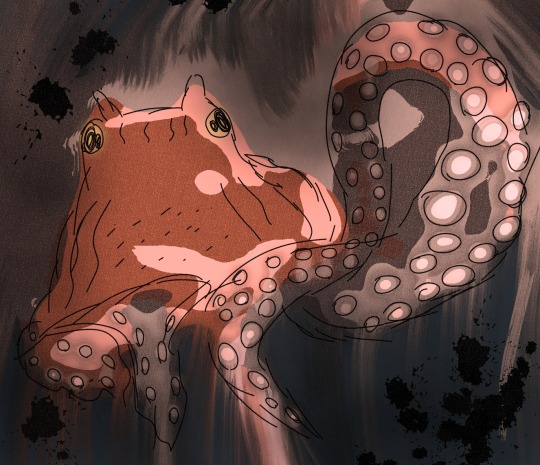
"giant pacific lump"
Infinite Painter.
It's a very lumpy giant Pacific octopus. Not much else to say.
CC-BY-SA 4.0
#creative commons#digital art#painting#octopus#cepahlopod#tentacles#underwater#ink#cloudy#giant pacific octopus
30 notes
·
View notes
Note
Pacific giant octopus
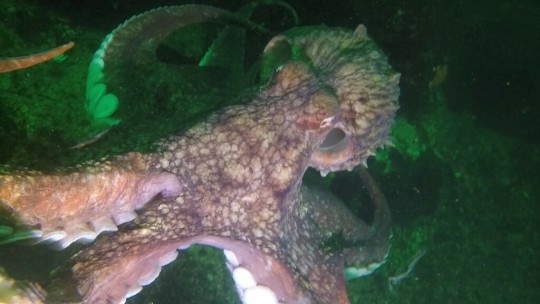
Daily Cephalopod #161
#octopus#giant pacific octopus#daily cephalopod#squid mail くコ:彡#cephalopod#GOOBERS!!!#marine life#ocean creatures#ocean critters#marine biology#zoology#animals#biology#cephalopods#marine animals
459 notes
·
View notes
Text
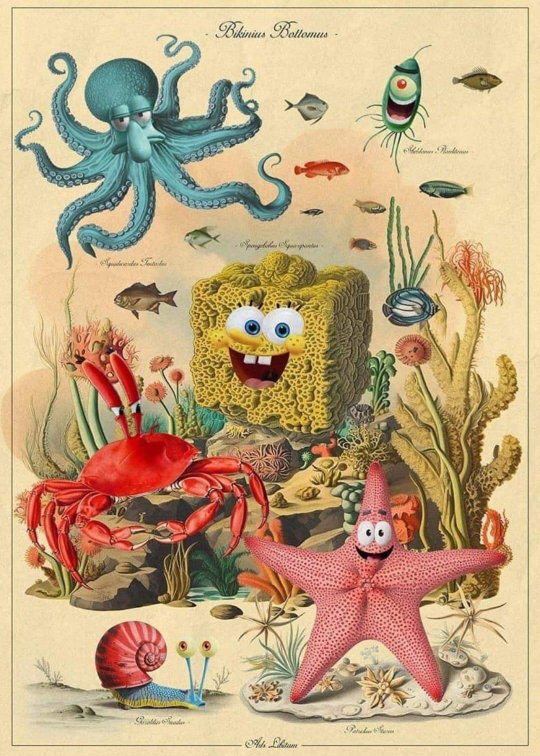
Bikinius Bottomus
#SpongeBob#spongebon squarepants#Patrick Star#characters#Squidward Tentacles#mr krabs#Plankton#Gary the Snail#gari#starfish#anthropomorphic#sea sponge#yellow#pink#red#turquoise#octopus#giant octopus#Giant Pacific octopus#red crab#crab#Copepod#illustration#vintage illustration#vintage#Bikini Bottom#marine life#tv series#animation#friends
116 notes
·
View notes
Text

I remember that I once said that Takoyama is a common octopus but last time I started thinking that he's more like a giant pacific octopus.
Yes, I seriously think about characters' species
#Takoyama#hairdresser octopus#octopus#species#character species#giant pacific octopus#parappa the rapper#parappa the rapper 2
16 notes
·
View notes